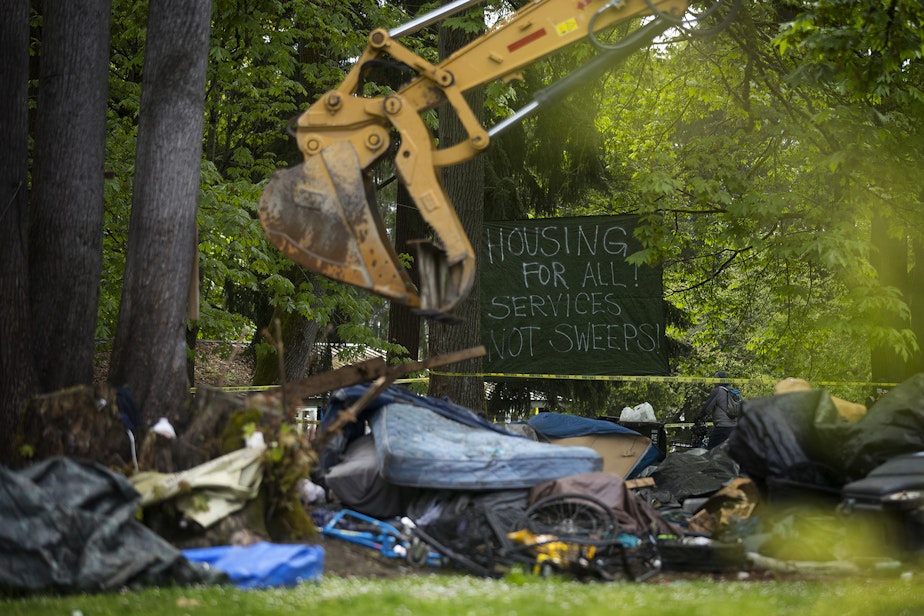Would you pay $700k to discourage a homeless encampment? Washington state did by buying rocks

In city planning terms, “hostile architecture” is the practice of using spikes, or bike racks, or cement blocks — really anything — as a design choice to prevent people from loitering or laying down in public places.
Sometimes hostile architecture is actually hostile landscaping.
That’s the case near the Sleater Kinney Road exit from I-5 in Lacey.
It’s the site of a former homeless encampment, now covered with a field of boulders.
A report from McClatchy said that these rocks are a new deterrent method employed by the state Department of Transportation.
And they’re costing taxpayers an eye-popping sum.
McClatchy reporter Shauna Sowersby said she started noticing the rocks because she lives nearby, in Olympia.
"I just really thought, you know, those are huge," Sowersby said. "Those cannot be cheap."
The boulders are part of a program called the "Rights-of-Way Safety Initiative", which aims to move people who are living in encampments near or on rights of way, such as highways, or under bridges.
"It's to get those folks out of those encampments, and get them placed into some sort of emergency shelter, temporary shelter," Sowersby explained. "And so these boulders are put in place to prevent folks from returning to those encampments."
These boulders are large, with little space in between. The site near Sleater Kinney, Sowersby said, contains hundreds of them.
So far, nearly $700,000 has been spent on boulders at three former encampment sites.
A majority of that money went to the Sleater Kinney site, Sowersby said.
"That price tag was $643,000 for the boulders, the placement, the transportation, and for cleanup at that area," she said.
That cleanup cost does not include clearing or cleaning up of the encampment, which was done a few months ago, just minor cleanup while placing the boulders.
Sowersby said that Gov. Inslee has defended the cost of the boulders, and that he thinks they're necessary to keep people from returning to the site.
"Neighbors have apparently reached out to him and told him that they also appreciate those being there, because they know that people won't come back," she said.
The Rights of Way Safety Initiative has so far closed 33 encampments, with $143 million allocated to the program as of now.
According to the state Department of Commerce website, around 1,600 people were living in those encampments, and about half that number are now in some form of housing.





